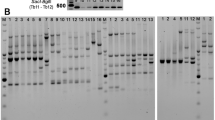Abstract.
Background: The microbiological analysis of respiratory specimens is the most reliable approach to diagnose active pulmonary tuberculosis.
Patient and Methods: We report a 60-year-old female patient (index patient) who underwent diagnostic bronchoscopy for chronic cough. No acid-fast bacilli were detected in bronchial washings. Although cough subsided with symptomatic treatment, Mycobacterium tuberculosis grew on egg-based media after 12 weeks. A false-positive culture result was suspected. Chart review and DNA fingerprinting were carried out.
Results: The bronchoscope used to examine the index patient was previously used for a 30-year-old patient (source patient) with smear- and culture-positive pulmonary tuberculosis. Restriction fragment length polymorphism (RFLP) analysis based on the IS6110 element confirmed that the two strains were identical.
Conclusion: Cross-contamination is a reason for falsepositive cultures with M. tuberculosis and should be suspected in patients with a low clinical probability for active tuberculosis.
Similar content being viewed by others
Author information
Authors and Affiliations
Additional information
Received: March 28, 2002 · Revision accepted: July 5, 2002
O.D. Schoch (corresponding author)
Rights and permissions
About this article
Cite this article
Schoch, O., Pfyffer, G., Buhl, D. et al. False-Positive Mycobacterium tuberculosis Culture Revealed by Restriction Fragment Length Polymorphism Analysis. Infection 31, 189–191 (2003). https://doi.org/10.1007/s15010-002-3060-7
Issue Date:
DOI: https://doi.org/10.1007/s15010-002-3060-7




